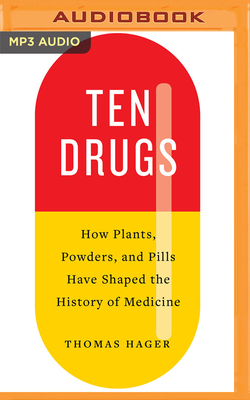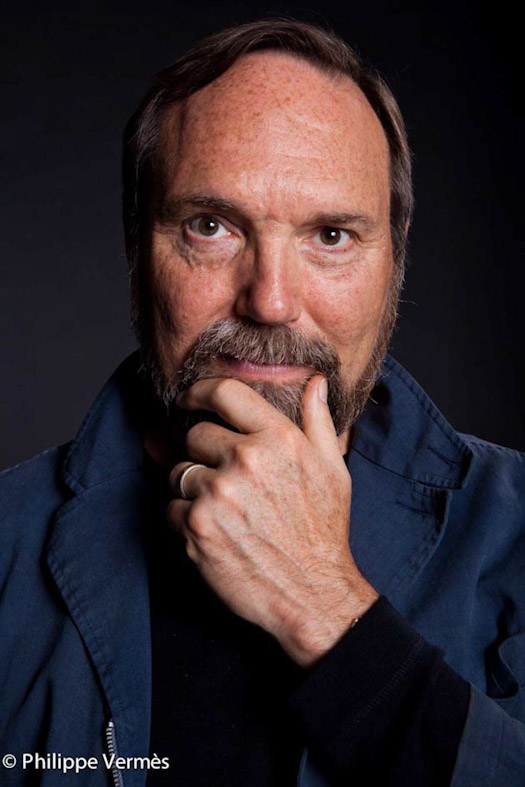

 Audible Studios on Brilliance
Audible Studios on Brilliance
Ten Drugs: How Plants, Powders, and Pills Have Shaped the History of Medicine


Key Metrics
- Thomas Hager
- Audible Studios on Brilliance
- Audio
- 9781799709220
- 6.75 X 5.25 X 0.5 inches
- -
- History > General
- English
 Secure Transaction
Secure TransactionBook Description
Behind every landmark drug is a story. It could be an oddball researcher's genius insight, a catalyzing moment in geopolitical history, a new breakthrough technology, or an unexpected but welcome side effect discovered during clinical trials. Piece together these stories, as Thomas Hager does in this remarkable, century-spanning history, and you can trace the evolution of our culture and the practice of medicine.
Beginning with opium, the joy plant, which has been used for 10,000 years, Hager tells a captivating story of medicine. His subjects include the largely forgotten female pioneer who introduced smallpox inoculation to Britain, the infamous knockout drops, the first antibiotic, which saved countless lives, the first antipsychotic, which helped empty public mental hospitals, Viagra, statins, and the new frontier of monoclonal antibodies. This is a deep, wide-ranging, and wildly entertaining book.
Author Bio
I am fascinated by the ways science and technology change our lives. When I find something interesting, I write about it, mostly books. Right now I’m focused on climate change, medicine, clean energy, and the future of food — a lot of the big topics related to the coming population surge — as well as the art of science communication. I really don’t get why people find it so easy to ignore/deny/dismiss simple facts, and I’m trying to figure that out. We’re at a weird point in history, with Americans believing some of the most ridiculous rumors and doing some of the stupidest things they’ve ever done in terms of creating a better world, while at the same time making discoveries that can make it possible for us to not only survive, but thrive in the near future, and leave our kids a better planet than the one we were born into. But we can only do that if we face facts.
My writing career got started after I figured out that I wasn’t cut out for laboratory research (it’s too repetitive for me, too confined, too much focused on getting the next big grant). So, after earning a master’s degree in medical microbiology and immunology from the Oregon Health Sciences University I went back to school and got a second master’s in journalism at the University of Oregon. I served as a communications intern at the National Cancer Institute, worked as a freelance medical writer, was a regular contributor to American Health and was a West Coast news correspondent for the Journal of the American Medical Association. After serving in several editorial positions I was named the University of Oregon’s Director of Communications and Marketing, and Director of the University of Oregon Press. I am currently a Courtesy Associate Professor of Journalism and Communication at the University of Oregon.
My works include either seven or twelve books (depending on how you count them, the bigger number includes co-written, edited, privately commissioned, and self-published volumes), mostly on science and medical history, and more than 100 feature and news articles in a variety of popular and professional periodicals, ranging from the Wall St. Journal and the Atlantic to Reader’s Digest and Cardio. Recent national recognition includes the American Chemical Society’s highest public communications prize, the 2017 Grady-Stack award.
One of my books, The Alchemy of Air: A Jewish Genius, a Doomed Tycoon, and the Scientific Discovery That Fed the World but Fueled the Rise of Hitler, was a finalist for the National Academies Communication Award; listed among the “Best Books of The Year” by Kirkus Reviews; and named a Borders “Original Voices” Selection. My latest, Ten Drugs: How Plants, Powders and Pills Have Shaped the History of Medicine, has been translated into fifteen foreign languages (I am way too thrilled by foreign editions of my work; for instance it made me unreasonably happy to learn recently that one of my books was translated into Bahasa, a language I’d never heard of, in Indonesia). My 2006 book The Demon Under the Microscope: From Battlefield Hospitals to Nazi Labs, One Doctor’s Heroic Search for the World’s First Miracle Drug was called “fascinating” by the Los Angeles Times and “a grand story” by the Wall St. Journal.
I’ve been an invited lecturer and guest scholar at a number of universities, and have spoken widely to groups ranging from the American Association for the Advancement of Science to the Goddard Space Center, Fortune 500 corporate boards, medical gatherings, and school and civic organizations. My media appearances include two talks on C-Span’s “BookTV;” interviews on National Public Radio’s “Weekend Edition,” “Science Friday,” “Diane Rehm Show” and “Tech Nation;” and an expert role in the OPB documentary “Linus Pauling.”
I live in Eugene, Oregon, with my wife, writer Lauren Kessler, where we raised three children: Jackson, Zane, and Elizabeth. I love Oregon, my family’s been here for five generations, and I strongly recommend that everyone from out of state stay away because it rains so much.
Source: thomashager.net
Community reviews
Write a ReviewNo Community reviews




